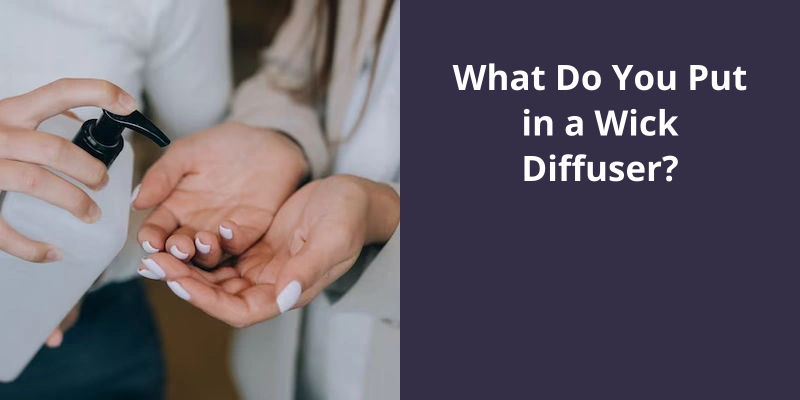Fixing riced soap involves several easy steps. First, you need to continue stirring the riced soap until it reaches a “trace”, which refers to the point in soap making where oils and lye water have emulsified. If, after much stirring, the soap mixture doesn’t come together, you should blend it with an immersion blender until it does. Some soap makers also advice to heat the soap mixture in a slow cooker on a low setting until it forms a cohesive mixture. Afterward, allow the soap mixture to cool, then proceed to add your soap fragrance. Stir it thoroughly and pour it into a mold, then let it cure. The curing process might take several weeks, so be patient. As a reminder, always wear protective gear when making soap to prevent direct contact with lye.

Can You Use Soap That Riced?
When it comes to handmade soaps, ricing is a common issue that soap makers face. Ricing occurs when the fragrance oil used in the soap-making process causes the soap to appear grainy and clumpy, resembling pieces of rice. This can be frustrating, especially when youve put in a lot of time and effort into creating the perfect soap.
If youre wondering whether you can still use soap that’s riced, the answer is yes, you definitely can. Although the appearance of the soap may not be what you intended, the soap itself is still perfectly safe to use and will still lather and clean as it should. In fact, some people even like the texture of riced soap, as it can give a slightly exfoliating effect.
If youre not happy with the appearance of riced soap, there are a few things you can do to try and fix the problem. The first thing to try is vigorously stick-blending the soap to try and smooth out the grainy texture. However, this doesn’t always work, especially if the fragrance oil is particularly prone to ricing. In some cases, it may be best to simply embrace the unique appearance of the soap and label it as such.
It’s worth noting that fragrance oils that cause ricing are usually moody fragrances, which means that they can behave differently depending on factors such as temperature and humidity. This means that even if a particular fragrance oil has caused your soap to rice in the past, it may not do so again under different conditions. It’s always a good idea to keep notes on which fragrance oils have caused ricing for you in the past, so you can avoid using them in the future if you prefer.
By keeping notes on which fragrance oils cause ricing for you, you can avoid the issue in the future and create perfectly smooth and beautiful soaps every time.
Tips for Preventing Ricing in the Soap-Making Process
Ricing in soap-making occurs when the oils and lye mixture start to clump and resemble rice grains, making it difficult to mold and pour. To prevent this, it’s important to work at lower temperatures and stir the oils and lye mixture slowly and gently. It’s also helpful to use a stick blender sparingly and to add fragrances and other additives slowly to avoid accelerating the ricing process. By taking these precautions, you can ensure a smooth and beautiful soap-making process.
Now that we’ve discussed the phenomenon of ricing in cold process soap and it’s link to fragrance oils, it’s important to understand what exactly causes this frustrating problem. In the world of soap-making, ricing can be a common occurrence that can alter the look and feel of your finished product. However, with the right knowledge and techniques, it’s possible to minimize the risk of ricing and keep your soap looking smooth and beautiful.
What Causes Cold Process Soap to Rice?
There are a few factors that contribute to the ricing process in cold process soap making. One of the main reasons is the fragrance oil that’s used. Certain fragrance oils have a tendency to cause ricing due to their composition. Fragrance oils that contain a high amount of essential oils, or those that have a high spice content, tend to be more problematic. When using these fragrances, it’s important to adjust your soap making process accordingly and not to mix them too vigorously.
If the soap batter is too cool, this can cause the oils and fragrance oils to separate and clump together. This can result in a riced appearance in the finished soap. To prevent this from happening, it’s important to make sure that your soap batter is at the correct temperature before adding your fragrance oil.
The method used to blend the fragrance oil into the soap batter can also affect whether or not ricing occurs.
Oils that are high in stearic acid or other similar fatty acids can cause the soap to rice. If you’re experiencing ricing with your soap recipe, try adjusting the types and amounts of oils you’re using.
Source: Cold Process – Common Terminology – Wholesale Supplies Plus
When it comes to making soap, there are a lot of factors that come into play. One common issue soap makers face is rebatch soap that isn’t hardening properly. There are a few reasons why this might be happening, but one of the most common is the use of liquid oils that don’t turn hard. If this is the case for you, then don’t worry – there are a few things you can do to help your soap firm up and become the perfect consistency.
Why Is My Rebatch Soap Not Hardening?
Another reason why your rebatch soap may not be hardening is because the lye solution was not strong enough, or the soap was not cooked long enough. When making a rebatch soap, it’s important to check the pH level to ensure that the lye solution is strong enough. If the pH level is too low, the soap won’t harden properly. Similarly, if the soap isn’t cooked long enough, it will retain too much moisture which will prevent it from hardening.
Additionally, if you’ve added too much liquid to the soap, it can also cause it to stay soft. This could be from adding too much water when melting down the soap, or adding extra oils that aren’t necessary. These ingredients are known for their hardening properties and can help solidify your soap.
Another common reason for soft rebatch soap is improper mixing. If the soap isn’t mixed thoroughly, there may be air pockets or areas that didn’t fully blend with the oils, causing it to remain soft and crumbly. Make sure to mix your soap well and consider using an immersion blender to get a more consistent texture.
Lastly, the environment in which your soap is curing can also affect how hard it becomes. Additionally, if the soap is curing in a room that’s too hot, it may melt or start to break down. Keep your soap in a cool, dry place and consider using a fan or dehumidifier to help with curing.
Check your ingredient ratios, ensure your lye solution is strong enough, add hardening ingredients, mix thoroughly, and consider the environment in which your soap is curing. With a few adjustments and tweaks, youll be able to create the perfect, hardened soap.
Common Mistakes to Avoid When Making Rebatch Soap
When making rebatch soap, there are certain mistakes that should be avoided in order to create a successful batch. These mistakes include adding too much water, overheating the soap, not blending the soap well enough, and using fragrance or essential oils that aren’t soap safe. It’s important to carefully follow a trusted recipe and to take your time when making rebatch soap to avoid these common mistakes.
It’s important to measure lye carefully when making soap, as using too much or too little can both have negative consequences. In this article, we’ll explore the effects of using too much lye in soap and how to avoid this common mistake.
What Happens if You Put Too Much Lye in Soap?
Lye, or sodium hydroxide, is a crucial element in the soap-making process. It reacts with oils or fats to create soap through a process called saponification. However, if too much lye is used, it can cause a number of issues that will affect the quality of the soap. One of the most common issues is a high pH level, which can cause skin irritation and burning.
This can make it difficult to use, and it may not lather as well as soap with the correct amount of lye.
If there’s too much lye, it can cause a chemical reaction that generates heat and can melt through a plastic container or other materials. This reaction can also release dangerous fumes, which can be harmful to those exposed to them.
It’s also important to wear protective clothing, gloves, and goggles to prevent any potential harmful exposure to the lye.
However, with proper measurement and precautions, it’s possible to avoid these issues and create high-quality soap without any negative effects.
As we’ve seen, rebatching or hand-milling is a soapmaking technique used to save soap that’s too soft and oily. It involves shredding or dicing previously made or commercially purchased soap and mixing it with a liquid until it reaches a molten, homogenous state. In the following sections, we will explore the rebatching process step by step and discuss some tips to make it more successful.
How Do You Rebatch Soap That Is Too Soft?
Rebatching is a popular technique used by hobbyist and artisan soapmakers to rescue soft or oily soap. The process involves first shredding or dicing the soap base into fine pieces, which are then mixed with a liquid to begin dissolving. Once the mixture has begun to desolve, it’s heated until it reaches a molten, homogenous state.
One of the biggest benefits of rebatching soap is that it provides you with the opportunity to fix problems with the soap. If the soap is too soft or oily, for example, adding small amounts of lye solution during the rebatching process can help improve the quality of the soap. Additionally, you can add fragrance or colorant to create unique and personalized soap bars.
The heating process needs to be done slowly and in small batches to make sure that the soap doesn’t overheat and turn to mush. During the reheating process, be sure to continually stir the mixture to ensure that it’s properly distributed.
While the process can be time-consuming, the benefits of being able to fix quality issues or create unique bars of soap make it worth the effort. Remember to use high-quality ingredients and take your time during the reheating process for the best results.
Tips for Selecting the Right Liquid to Use in the Rebatching Process
Rebatching soap is the process of melting down a previously-made batch of soap to reshape or fix imperfections. When selecting a liquid to use in this process, consider factors such as skin sensitivity and desired texture. Common options include milk, aloe vera juice, beer, and water. It’s important to avoid adding too much liquid, as this can cause the soap to become too soft or even dissolve. Start with small amounts and adjust as necessary.
Conclusion
The formation of rice-shaped lumps is often caused by the binding of fragrance ingredients with hard oil components. Fortunately, one can use a stick blender to smooth out the lumps and achieve a smooth consistency. However, the resulting soap is usually thick and may require one to forego their original design plans and use a spoon to get it into the mold.





